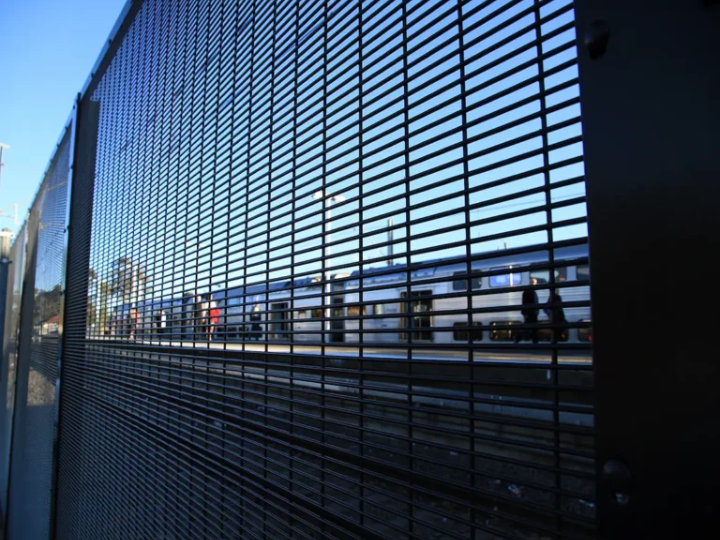Securing commercial and government facilities requires fencing that combines strength, durability, and long-term reliability. 358 anti climb mesh fencing has become a preferred choice for high-security applications, including logistics hubs, construction sites, government infrastructure, and educational campuses. Its tightly spaced mesh design prevents unauthorised access, deters climbing, and provides clear sightlines for monitoring. To ensure this type of fencing continues to perform at the highest level, regular maintenance and careful attention to detail are essential.
Regular Inspection of Panels and Posts
Routine inspections are the foundation of effective fencing maintenance. Regular checks help identify issues before they escalate, preventing costly repairs and potential security breaches. Key aspects include:
-
Panel Integrity: Look for bent, deformed, or damaged panels that may compromise security. Even minor distortions can provide footholds for unauthorised entry.
-
Posts and Foundations: Inspect posts for rust, corrosion, and stability. Loose or unstable posts reduce the fence’s effectiveness and increase safety risks.
-
Fasteners and Connections: Ensure all bolts, nuts, and fixings are secure and intact. Replacing worn fasteners prevents panels from loosening or detaching over time.
Maintaining a strict inspection schedule ensures the fence maintains its structural integrity and continues to provide the intended security level.
Cleaning and Corrosion Prevention
Environmental exposure is a major factor affecting the longevity of fencing, especially in coastal or industrial regions. Preventative care includes:
-
Surface Cleaning: Remove dirt, dust, and debris from panels to prevent abrasive wear and corrosion buildup.
-
Vegetation Control: Keep the base of the fence free from overgrown plants or vines that can trap moisture or damage coatings.
-
Protective Coatings: Inspect galvanisation or powder-coated surfaces and touch up areas showing signs of wear. Corrosion prevention extends the fence’s operational life and maintains its security performance.
Regular cleaning and corrosion control are essential for high-security fencing, particularly when installed in harsh environments.
Gate and Access Point Maintenance
Gates are often the most frequently used part of any fencing system and require dedicated maintenance:
-
Lubrication: Hinges, rollers, and locks should be lubricated regularly to prevent wear and ensure smooth operation.
-
Mechanical Integrity: Check that gates remain aligned and that automated mechanisms function properly. Misaligned gates can reduce security and cause operational delays.
-
Access Control Systems: Ensure card readers, keypads, or biometric sensors function reliably and maintain accurate access logs.
Proper maintenance of gates ensures the overall effectiveness of the perimeter and minimises downtime due to mechanical failures.
Vegetation and Surrounding Area Management
Vegetation management is often overlooked but is critical for fencing performance and site security:
-
Clear Buffer Zones: Maintain a clear perimeter around the fence to allow for easy inspection and deter unauthorised access.
-
Regular Trimming: Cut back trees, bushes, and other plants that could obstruct visibility or interfere with the fence structure.
-
Drainage Considerations: Ensure that water does not accumulate at the base of the fence, which can accelerate corrosion and foundation instability.
Managing the surrounding area protects the fence from environmental stressors and ensures security personnel have unobstructed lines of sight.
Professional Servicing and Repairs
While routine inspections can be performed by in-house teams, engaging professionals for periodic servicing ensures long-term reliability:
-
Panel Repairs: Address bent, damaged, or corroded panels immediately to maintain perimeter integrity.
-
Structural Assessments: Professionals can identify potential weaknesses in posts, foundations, and gates that may not be apparent during routine checks.
-
Upgrades and Enhancements: As technology advances, integrating modern access control systems or reinforcing existing fencing may improve overall security.
Professional servicing reduces the risk of unplanned failures and supports compliance with security standards for commercial and government projects.
Documentation and Maintenance Scheduling
Maintaining accurate records of inspections, repairs, and servicing is critical for long-term management:
-
Inspection Logs: Track the condition of each panel, post, and gate over time.
-
Repair Records: Document the date, type of repair, and personnel responsible.
-
Scheduled Maintenance: Develop a recurring maintenance schedule to ensure no aspect of the fence is overlooked.
Proper documentation not only supports operational efficiency but also provides evidence of proactive security management for audits or compliance purposes.
Integration with Security Systems
Modern high-security sites often integrate fencing with surveillance and monitoring systems:
-
CCTV Integration: Cameras positioned along the fence enhance visibility and provide real-time monitoring of access points.
-
Alarm Systems: Sensors on gates and panels alert security personnel to attempted breaches or tampering.
-
Remote Monitoring: Integration with centralised control systems allows for rapid response to incidents, reducing the likelihood of unauthorised access.
Combining physical fencing with electronic security measures enhances overall protection and ensures the fence continues to meet operational and regulatory requirements.
Benefits of Proactive Maintenance
Proactive maintenance of 358 anti climb mesh fencing offers multiple advantages:
-
Extended Lifespan: Regular care prevents rust, wear, and structural degradation, reducing replacement costs.
-
Consistent Security Performance: Prevents weaknesses that could compromise site protection.
-
Operational Efficiency: Smooth gate operation and well-maintained fencing minimise downtime.
-
Regulatory Compliance: Demonstrates adherence to industry standards and government security protocols.
Facilities that invest in structured maintenance programs experience fewer emergencies and maintain a higher level of operational reliability.
For commercial and government facilities, implementing a comprehensive maintenance program ensures that 358 anti climb mesh fencing continues to provide durable, reliable, and effective perimeter security. By combining regular inspections, cleaning, gate servicing, vegetation management, professional servicing, and integration with monitoring systems, organisations can protect critical assets, maintain regulatory compliance, and ensure operational efficiency across logistics hubs, construction sites, government infrastructure, and educational campuses for the long term.
